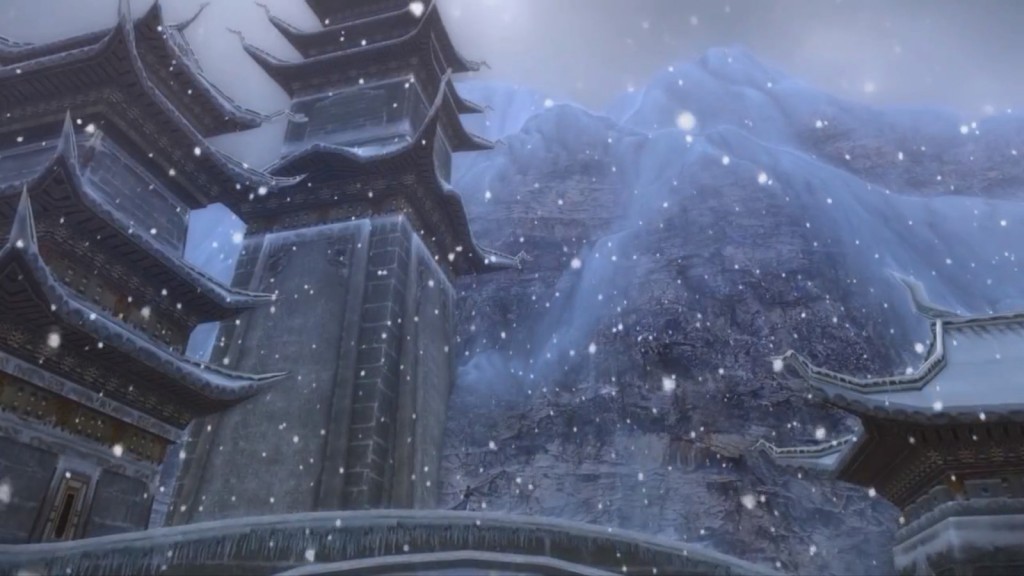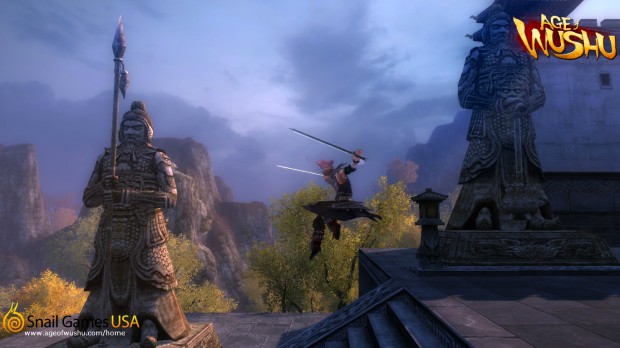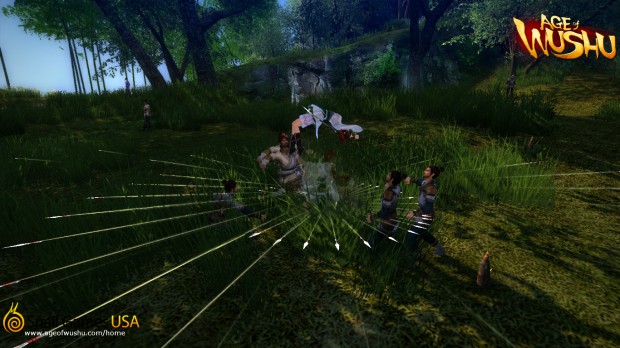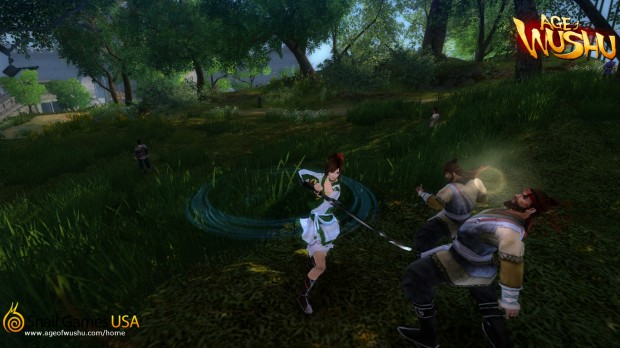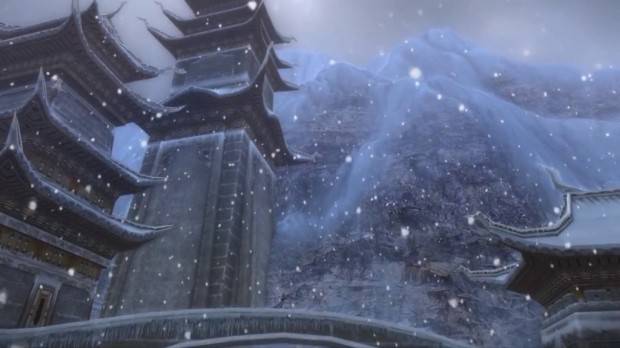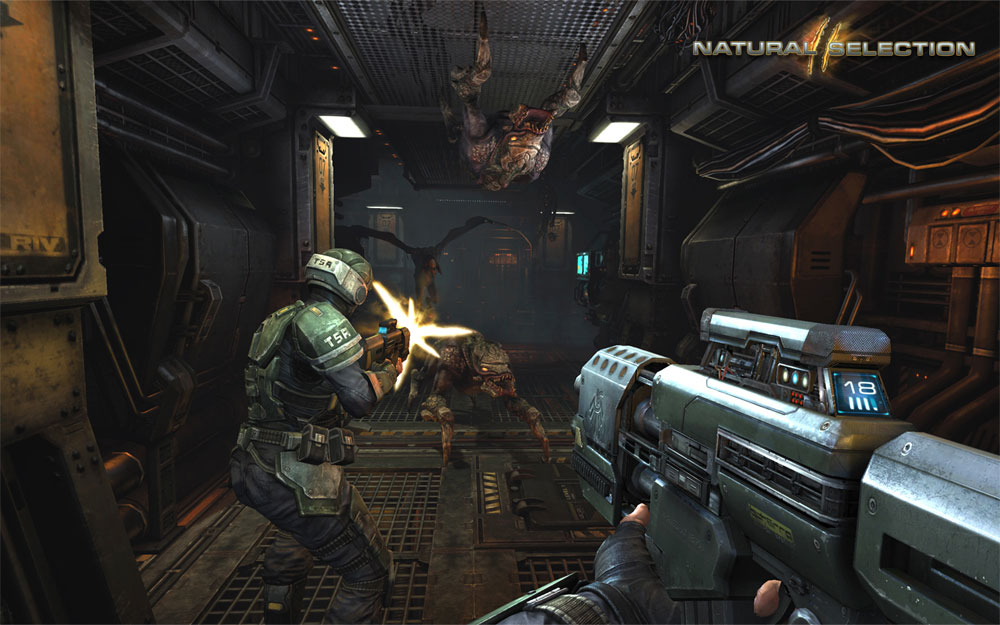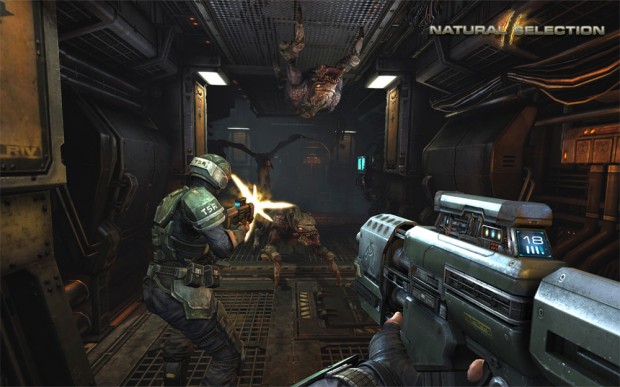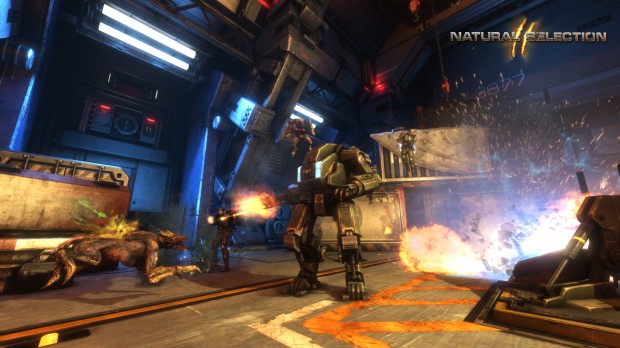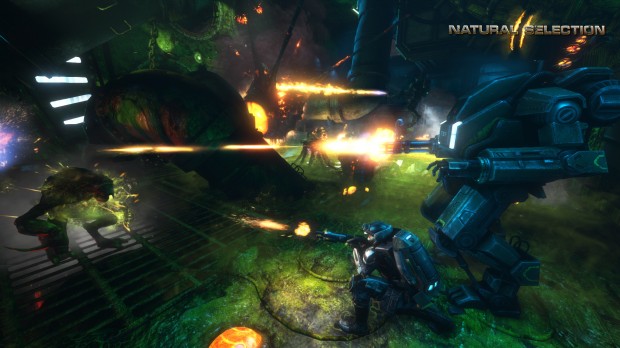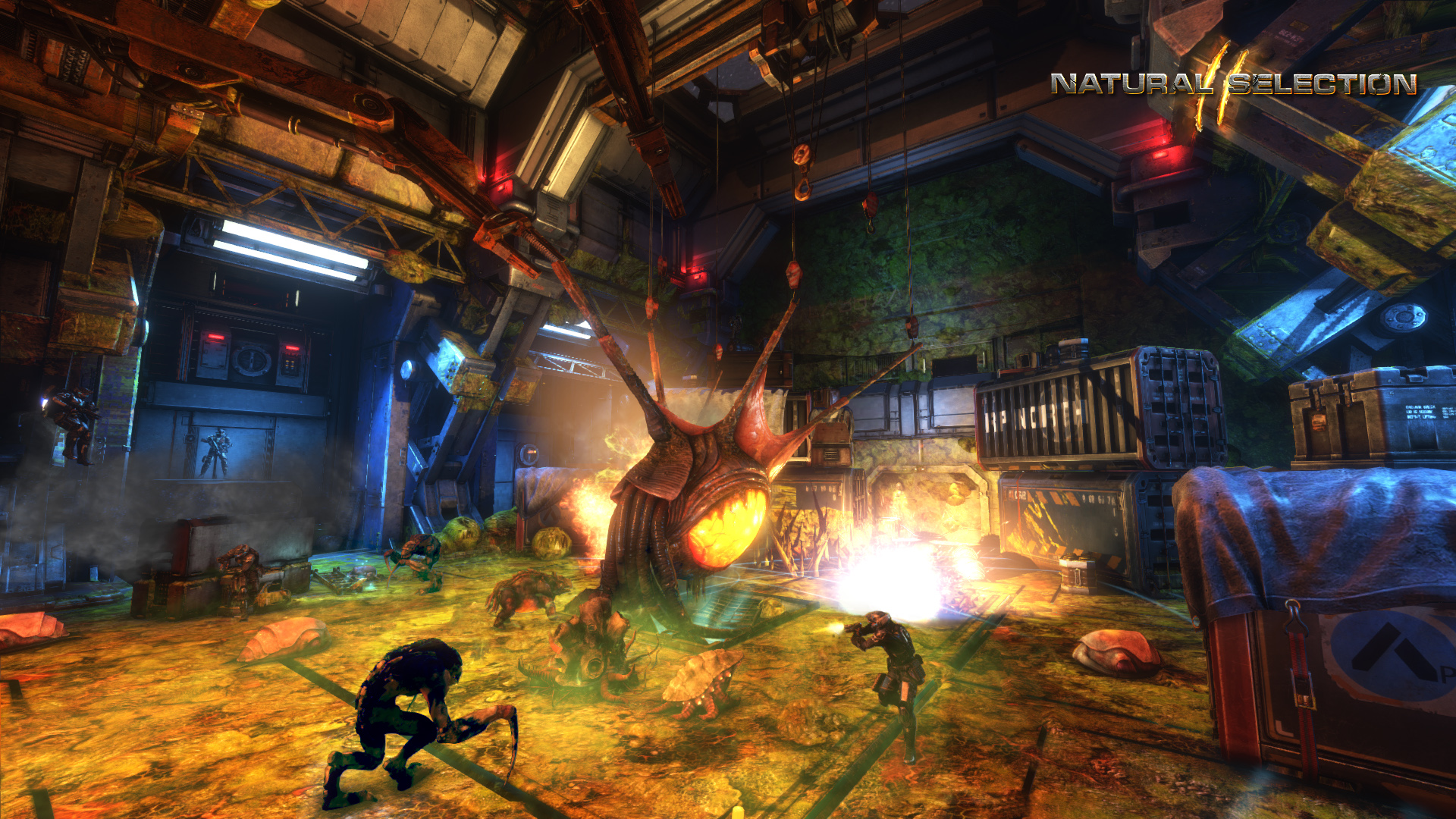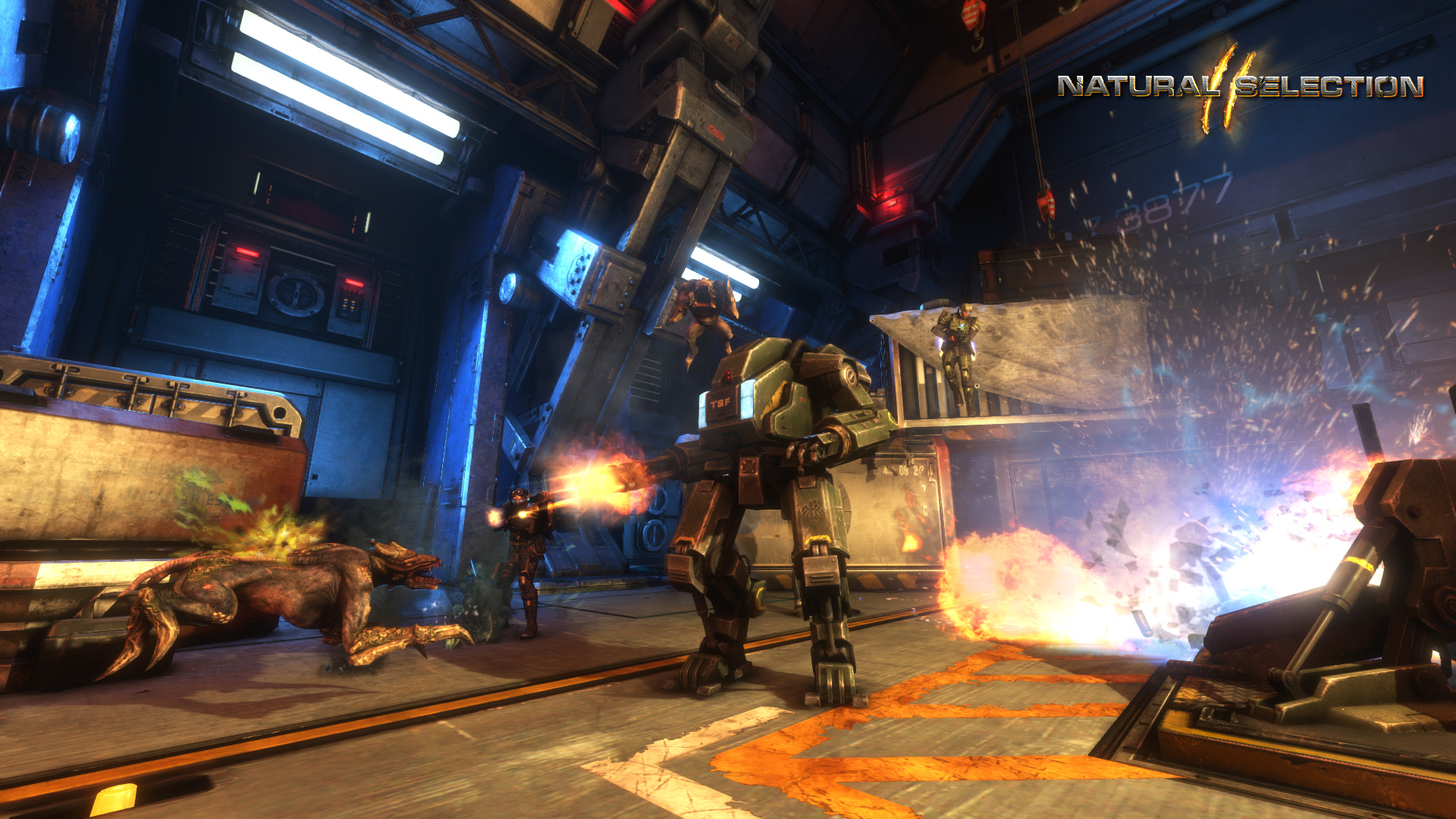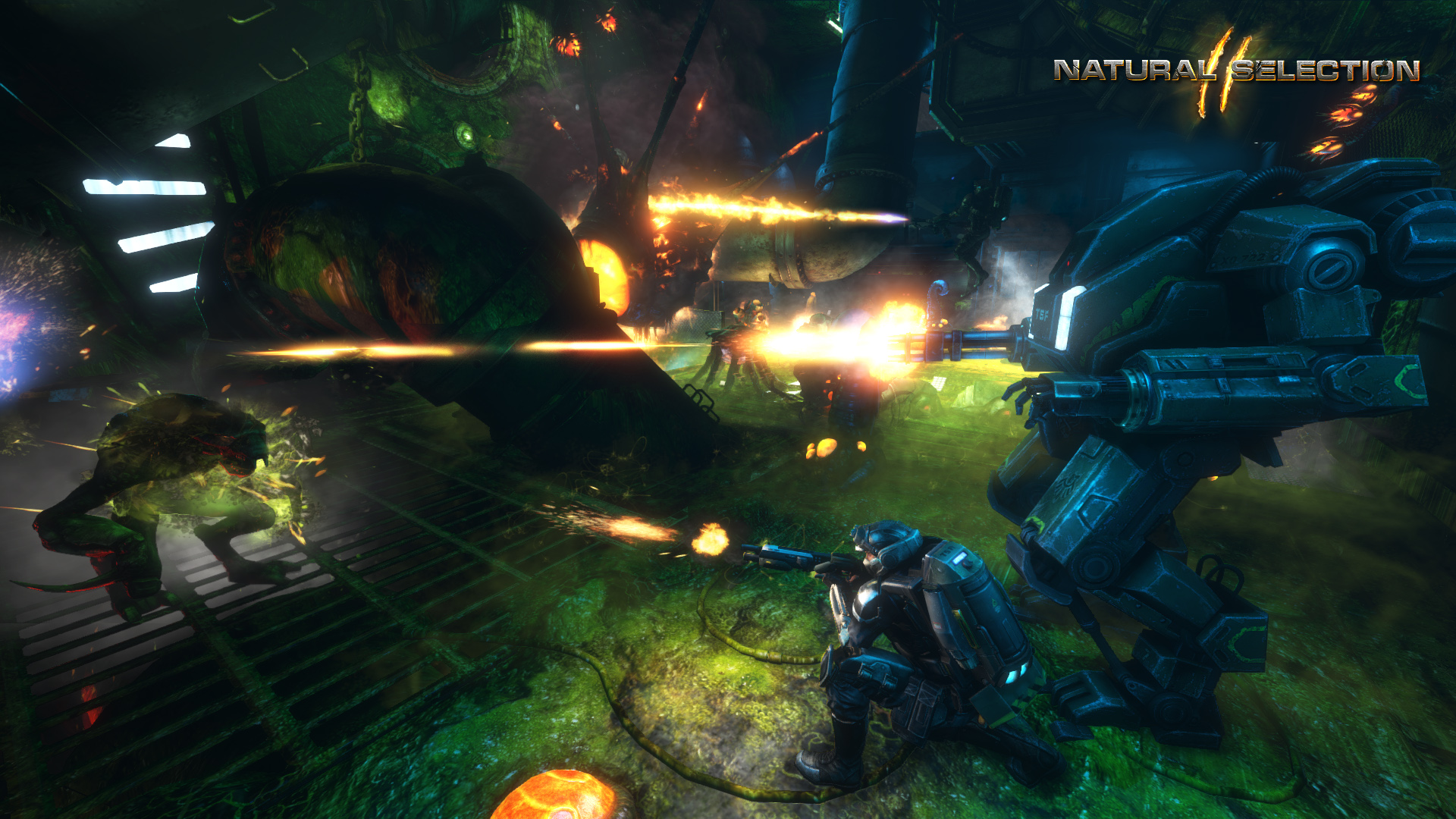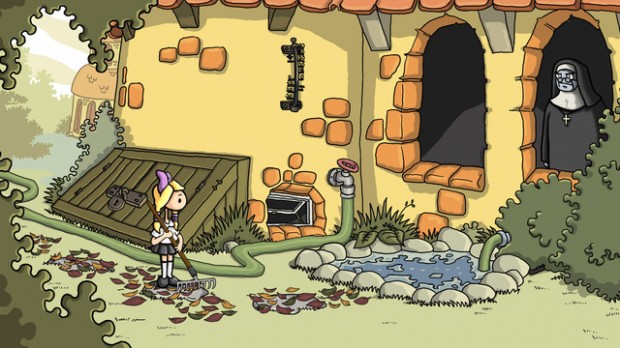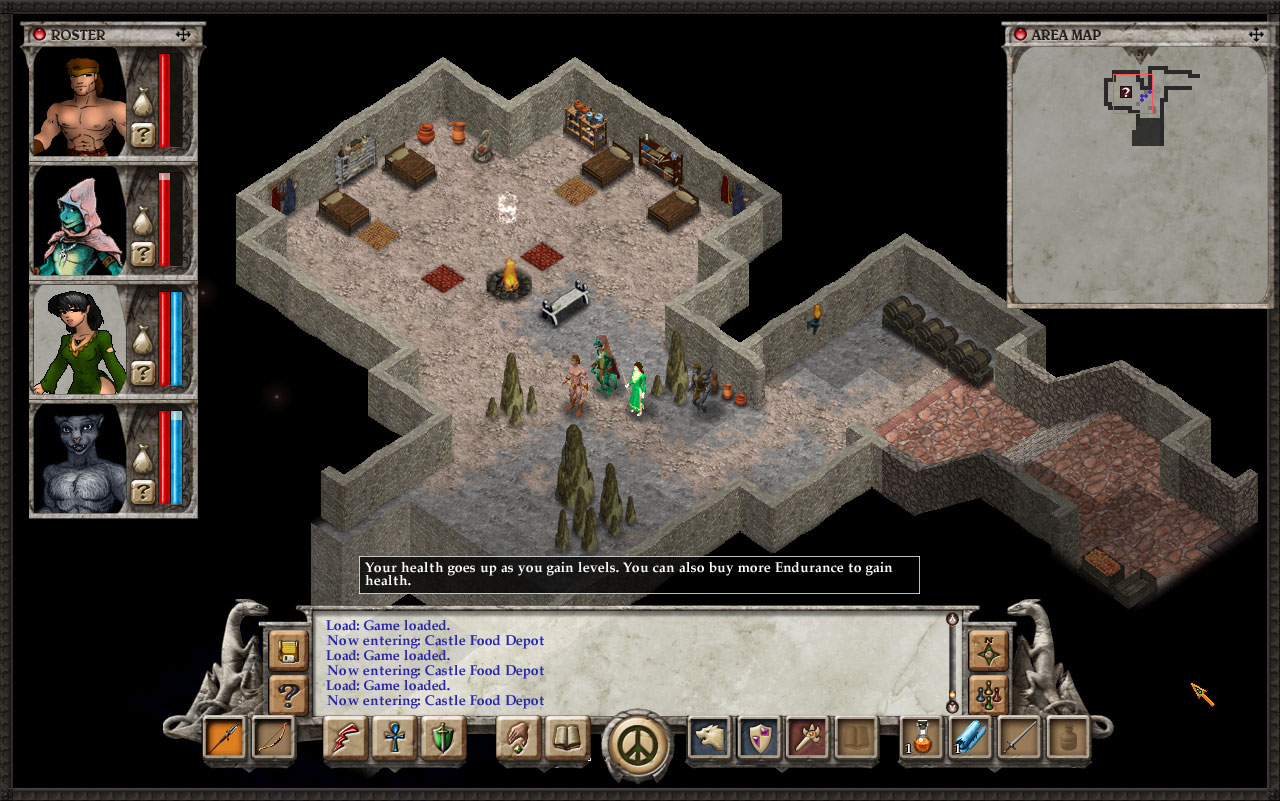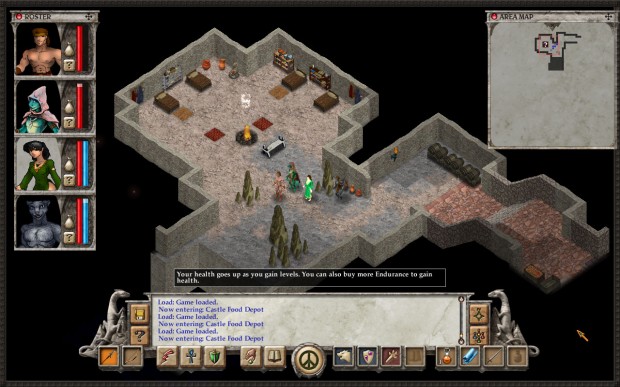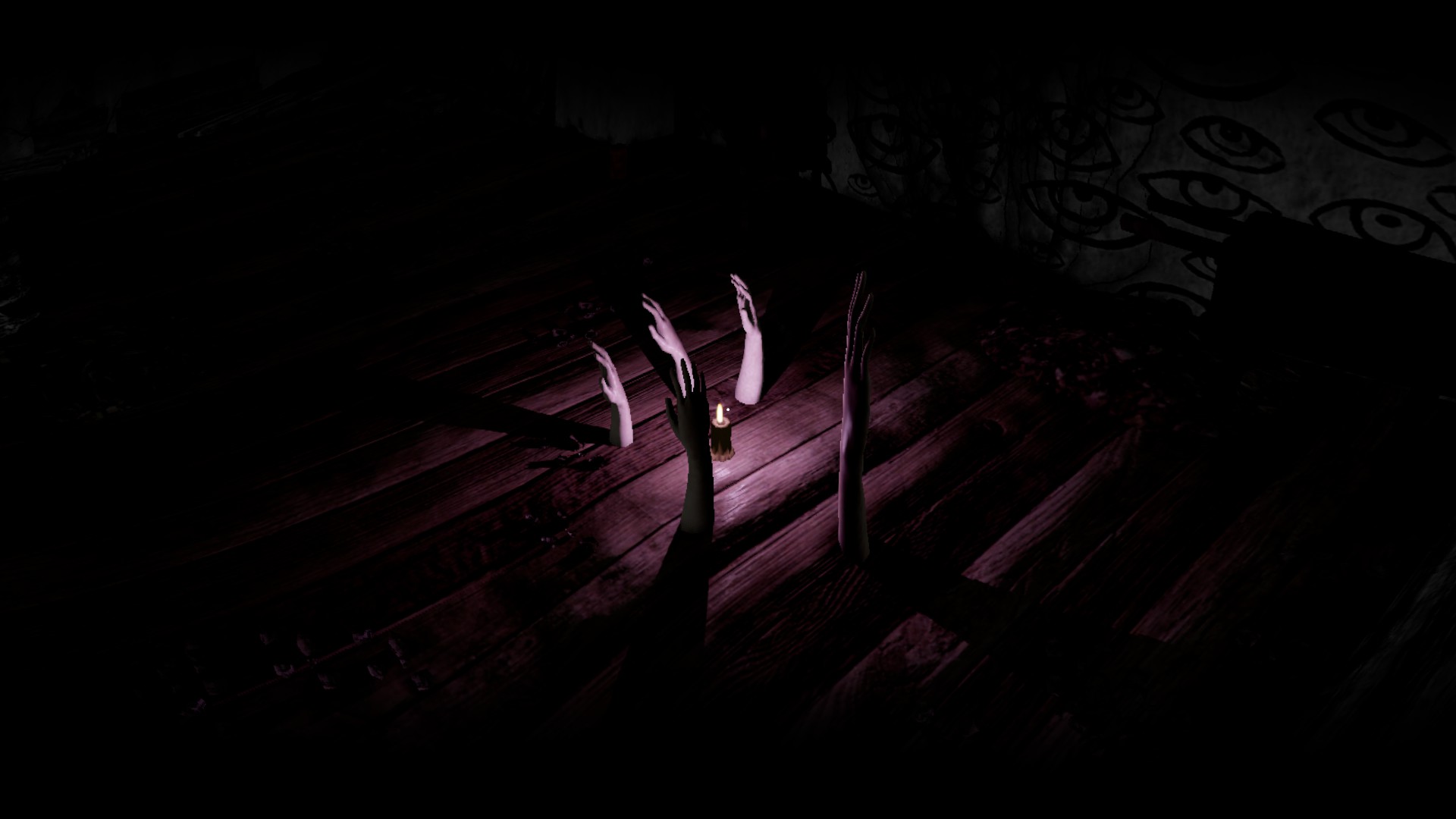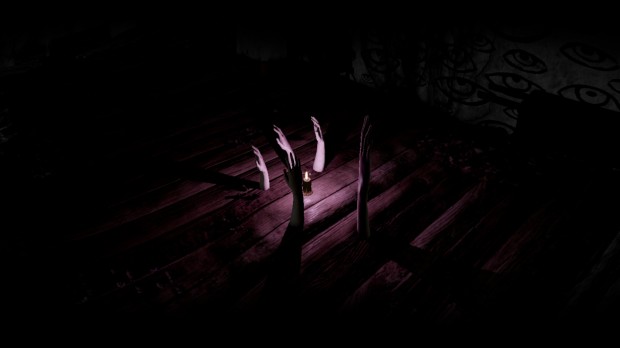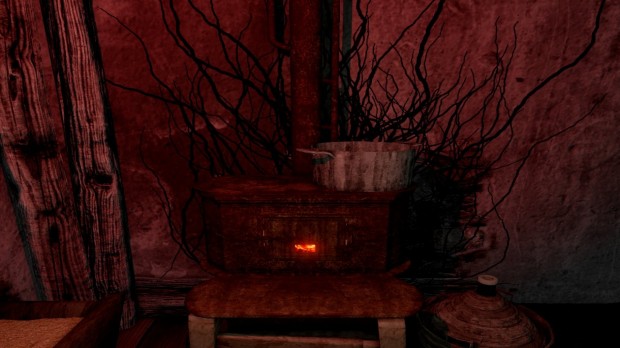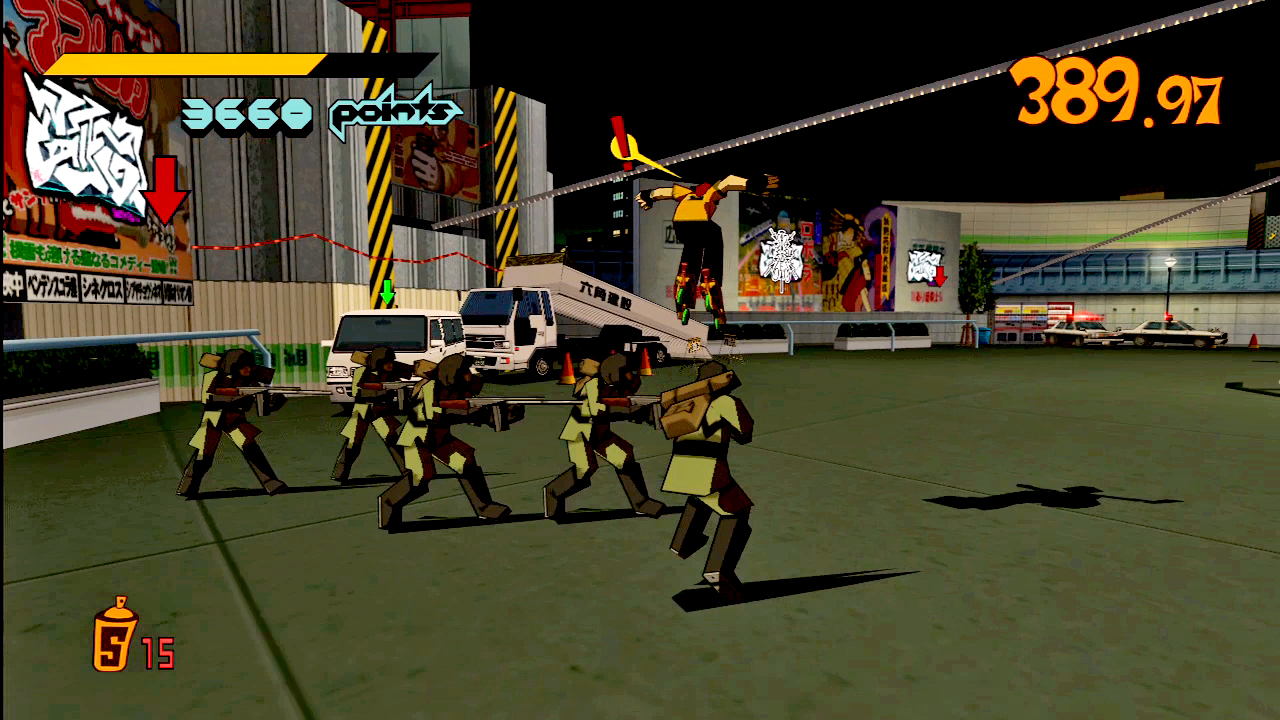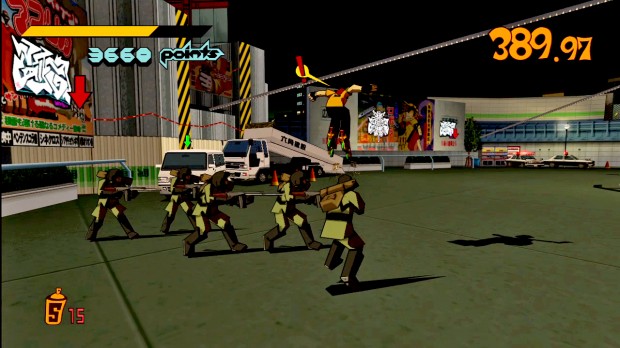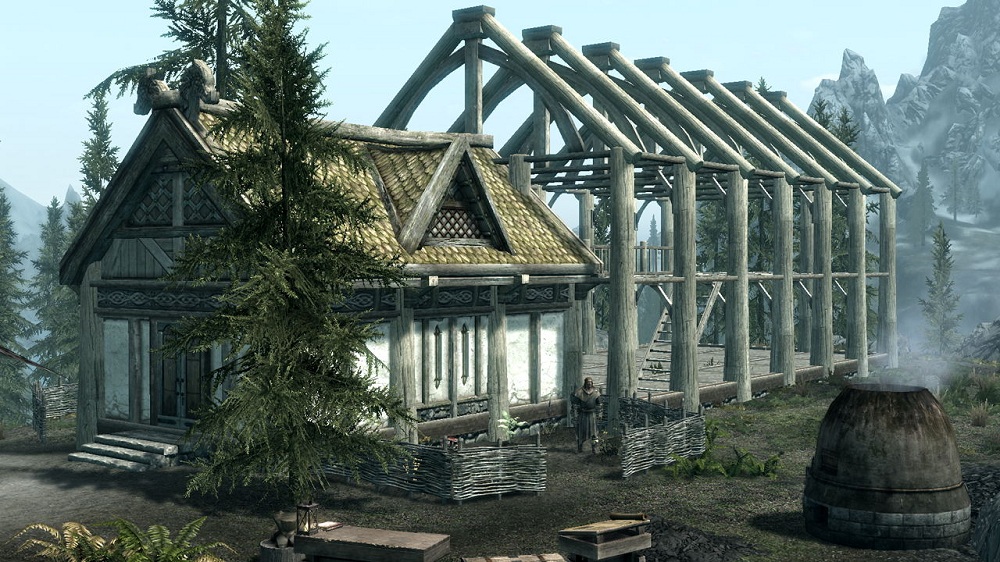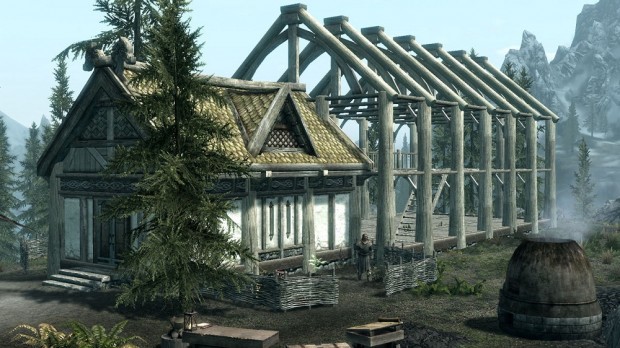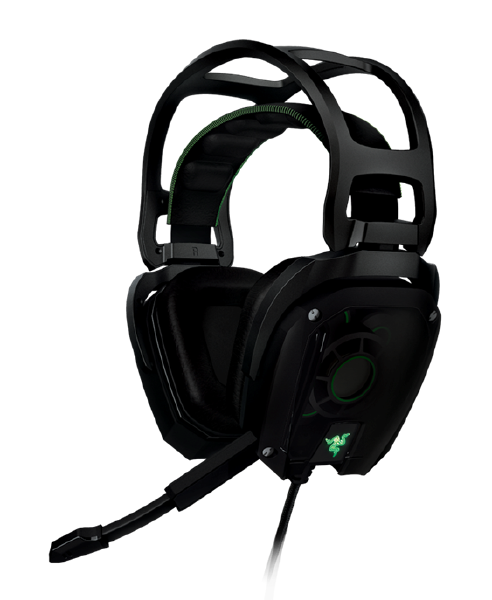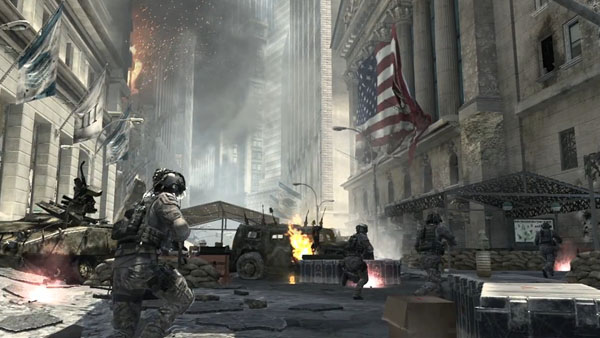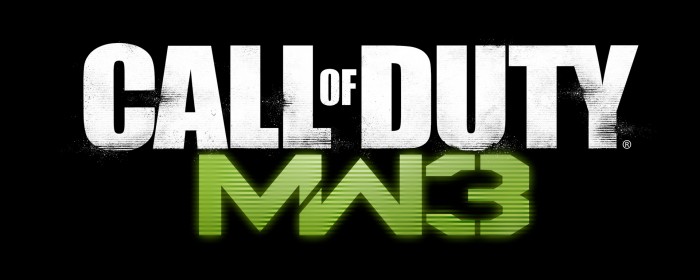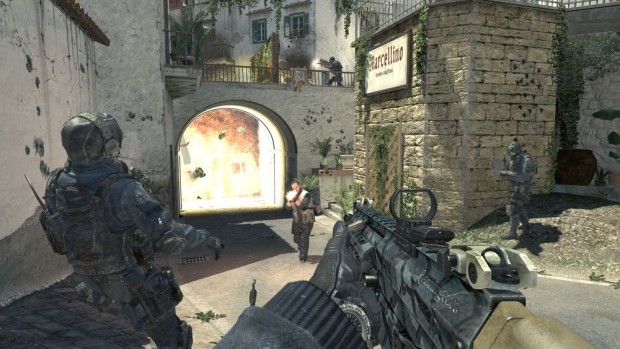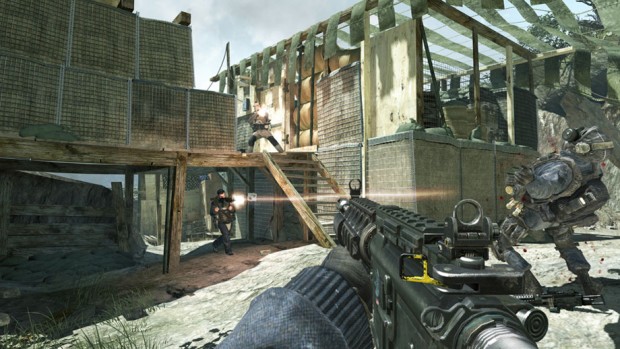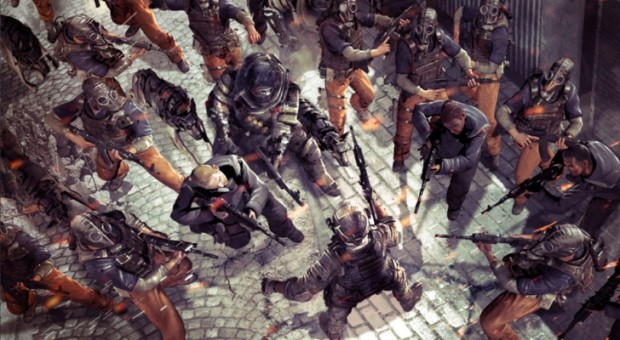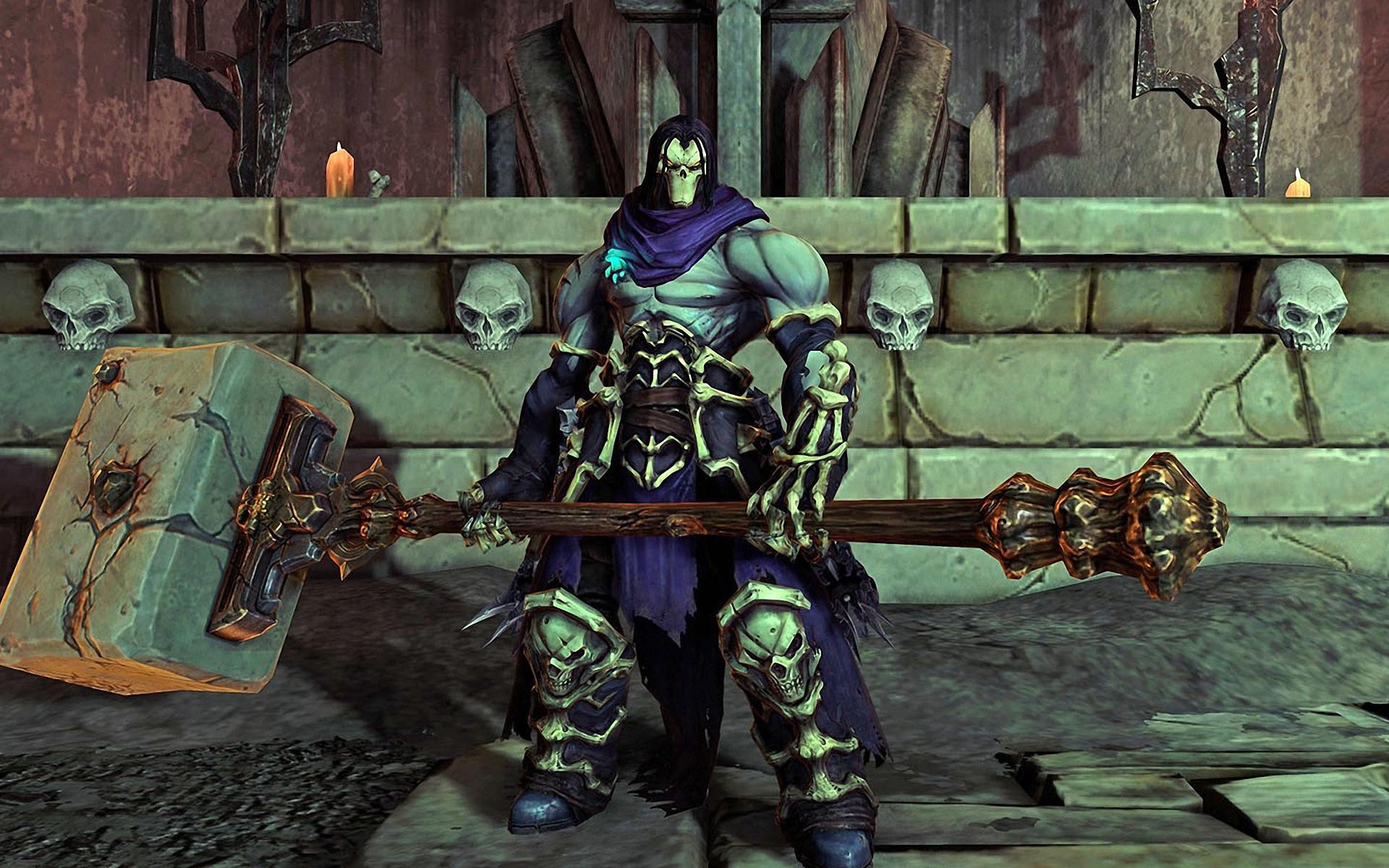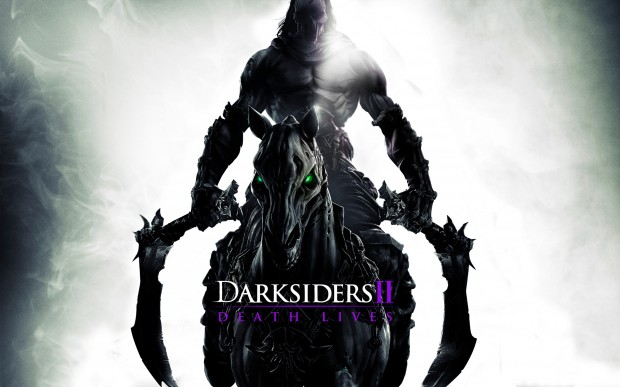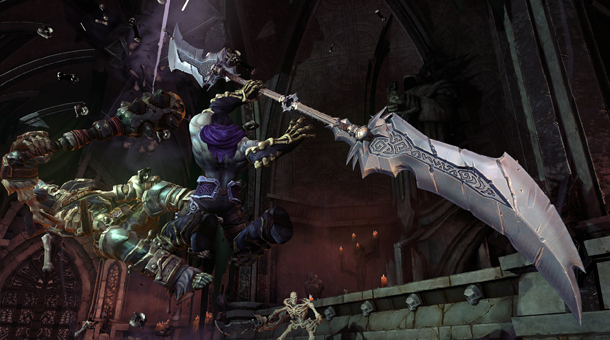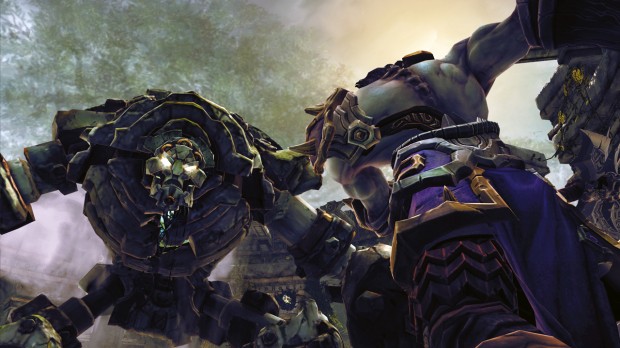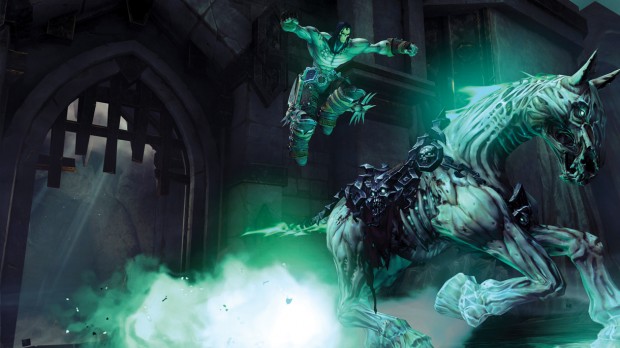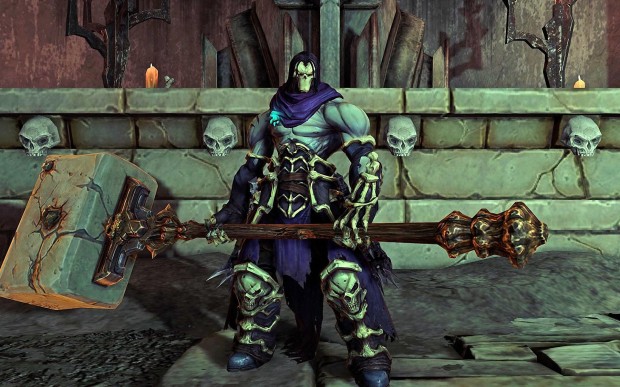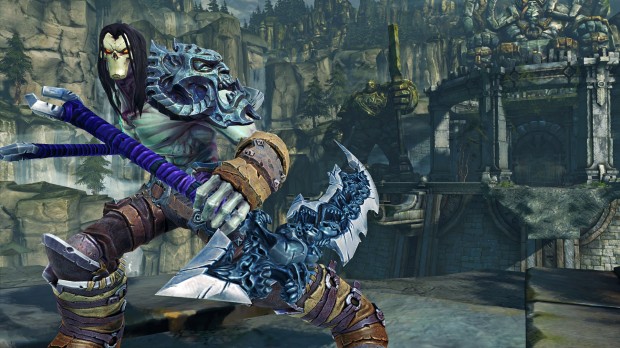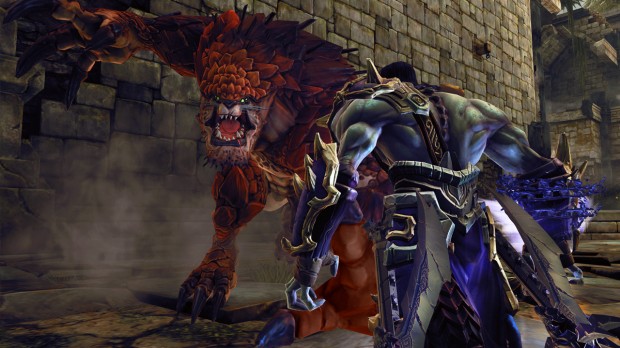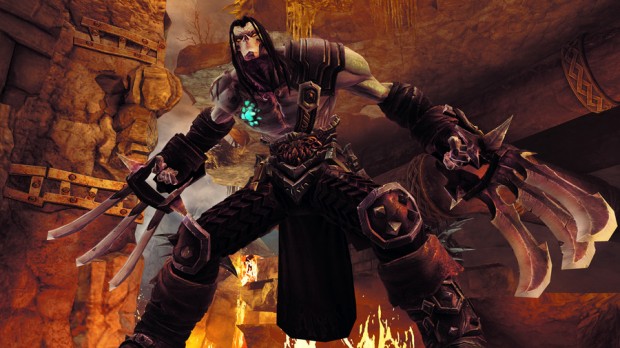Chinese game developer, Snail Games, let us in on the closed beta for their upcoming, free to play MMORPG, Age of Wushu. Age of Wushu is set during the time of the Ming Dynasty in fifteenth century China at the height of the feudal empire. The Age of Wushu borrows heavily from the Wuxia genre of literature, which follows a hero of low birth that sets out onto an adventure, with superhuman martial arts capabilities. Movies like Crouching Tiger, Hidden Dragon, Hero, House of Flying Daggers, and Kung Fu Panda are excellent examples of the art of Wuxia in film form. Kung Fu Panda has been seen by the Chinese as the only Western film to accurately portray the art of Wuxia. This is the aesthetic that the Age of Wushu is based on, which really interested me prior to the Closed Beta. How did the rest of the game measure up? Let’s take a look.
Story:
Age of Wushu’s story line is set during the Ming Dynasty in fifteenth century China. The feudal empire is at it’s height and the Yongle Emperor Zhu Di, is in power. Snail Games does an outstanding job of setting the world that the character will play through based on actual events during the Yongle Emperor’s reign in China. This story acts as the background for the player, as he or she follows their own destiny through the Age of Wushu, which is chosen at character creation.
When the player creates his or her character, the player must also select a Drama. The Drama selected becomes the character’s personal story line to follow through the Age of Wushu game play. You can choose between seeking vengeance for a slain family, seeking knowledge and adventure, finding a sacred sword, or choosing to protect the remainder of your family from an unknown enemy. Each Drama will start you off in a different city to begin your adventure, and as you follow the story line, you will get to explore the vast world in the Age of Wushu.
While the mechanic of the Dramas works out perfectly and gives the players much more control over the type of story that their characters will be involved in, the actual writing of these Dramas and character conversations needs a good editor. Spelling and grammar mistakes are abound during conversations, enough to confound the player as to what the story is actually trying to tell them. Since the Age of Wushu is still in beta, I would imagine most of this is still on the “to fix” board at Snail Games, and while bad spelling and grammar is seemingly a trifle when it comes to a game, it is enough to take a player out of the story and question quality control of the game.
Overall, the Age of Wushu does an excellent job in setting up a vast and interesting setting for their game. Allowing the player to choose their own story line makes the player become more invested in his or her character and care more about what is going on. Age of Wushu portrayed the world of the Ming Dynasty as interesting and full of adventure and, though full of grammar and spelling mistakes, was interesting and fun to play in.
Gameplay:
Snail Games has developed the Age of Wushu to be a free to play MMORPG, which is still seen as the “kiss of death” among the gaming culture. If you do not play Age of Wushu just because it’s a free to play game, then you are doing yourself a huge injustice. Free to play is the future of the MMORPG genre, with micro transactions becoming the bulk of the income for developers after the initial sale of the game. While we are still looking at Age of Wushu in closed beta, I feel that Snail Games understands this and has done a fantastic job so far in developing their game.
Age of Wushu has many different traits that is unique to a select few games in this genre, if not wholly unique to Age of Wushu. First, there are no classes nor levels in Age of Wushu. You develop your skills by using them in the real world or by training with a master. This gives the Age of Wushu a more realistic feeling then other games. Just like real life, your character can have different jobs or talent sets throughout their lives in China, never just stuck in one path or skill set. A certain martial art not working for you? Quite the school and do another one. The only penalty you earn is having to start over with that new school and having to learn their ways. There are eight schools of martial arts in Age of Wushu, four belonging to a good school, two neutral, and two evil. The good schools are Wudang, Shaolin, Emei, and Begger, the neutral schools are Tangmen and Scholars, while the evil schools are Royal Guard and Wanderer’s Valley.
Another unique game play feature to the Age of Wushu is their offline player development mechanic. Before you log off, you choose a role for your character to play in the world while you are away. These roles can be beggar, guard, or merchant. You can gain offline experience and items during this time, and your character stays in game as a non player character, able to be interacted with or even kidnapped. When you log back on, you will get a menu, itemizing your experience gains or any other items gained from your job. If the world is too full of logged out player characters for your liking, you can always choose to hide them by pressing F9.
Movement is similar to other games of this genre, and you have a couple of choices at the beginning as to how you want to move your player around the world. The most unique aspect of Age of Wushu in regards to movement is the auto-pathing system. Instead of asking an NPC where a certain person is, you simply click on their name and the game will take control of your character and move you towards that person. This works fairly well most of the time. However, the auto-pathing would sometimes get stuck on obstacles in the way. Also, the AI does not take the most efficient route to your destination. Despite this, l like how this movement model works. That being said, don’t walk away from your PC thinking you are safe while auto-pathing, because Age of Wushu is a player versus player game.
Age of Wushu is built solely around a player versus player world. You can be attacked or attack anyone during anytime you spend in the game. This makes the world feel like a dangerous place, but not without law or consequence. If a player is murdering other players, they can become wanted criminals with a bounty placed on them, can spend time in jail, or even be executed in the city square. Other players can break you out of jail to save your neck, so make sure you have enough friends to save you from the chopping block.
Since there are no levels in this game, combat efficiency is based on your training in your chosen martial art, just like it is in the real world. A person who has trained for a longer period of time in their chosen martial art, will be harder to beat then someone who just logged in with the basic knowledge of fighting. Combat is based on the Wuxia version of hand to hand combat, meaning that it can become aerial and very interesting to watch. I got to watch two individuals fly all over the city square, fighting with dual swords until one finally dropped out of the sky and didn’t get up. The actual mechanic of combat is similar to any other mmorpg that you may have played, you are given a set of moves with certain damage or power sets, and either click them or assign them to hot keys during combat. Players have a health bar, a chi bar, and a flying energy bar that represents your ability to complete moves in combat. These can be added to depending on your chosen martial art. Combat is also based on a paper, rock, scissors model, which effects the efficiency of certain moves. If a player is blocking, then the normal attacks will do no damage, so the attacking player must use a power attack to break the block, but these power attacks will be canceled out if the defending player uses a normal attack. During combat, this makes the selection of your next move important and based on what your enemy is doing, just like real combat.
The game play for Age of Wushu is deep, very deep. Be prepared to do a lot of reading in learning how to maximize your character. With no classes, no levels, and no skill trees to be found, Age of Wushu sets up a world that both feels and plays like the real world. Age of Wushu tries to make things easier to understand for the player, but due to the issues in spelling and grammar, sometimes the ideas are not conveyed in the clearest ways. This leaves the player to have to read into exactly what each skill does, and even that does not make things perfectly clear. I spent a lot of my time in trial and error mode to find out exactly which skills were most effective in a given circumstance. Hopefully, before release, Snail Games will work on making these things more clearer to the players, because everything else felt very natural and fluid in regards to game play for the Age of Wushu.
Age of Wushu will not win any technical awards for the best graphics in a video game, but its aesthetic design does a great job with bringing the world of Ming Dynasty China to life. I loved riding my horse through the world and seeing the sites as I traveled between towns. The design of Age of Wushu truly makes it feel unique and, for the lack of a better word, Chinese. The developers recreated a beautiful world that every sense feels like you are in China during the fifteenth century.The world of Age of Wushu feels alive and vibrant, with the use of offline characters as NPCs. You never feel like the world is dead or unfilled, while this may be created by the previous fact that offline characters are still seen, makes it no less alive.
The music is very nice, though repetitive at some points. The music is obviously Chinese in nature, to fit the world that the story is set in and is well done. However, certain parts of the game uses the same bit of music over and over again, so some of the pieces became very repetitive to the point of becoming annoying. This is not a game breaker, but when it is noticeable, then it needs to be looked at. Other then that criticism, the music works well to bring the world of Age of Wushu to life.
One last bit of information on the aesthetics of Age of Wushu is that there is no voice acting at all. None of the characters are voiced, and all communication is through text conversations. In this day and age, this made the Age of Wushu feel a little dated. While developers don’t have to go the route of fully voiced conversations like Bioware did, some voice acting gives the game a better, higher quality feel. Even just by adding voiced greetings to start a conversation, especially in Chinese, would make the world that much more alive to me. I understand the development decision not to do voice overs, but I also miss that interaction.
Final Thoughts:
There are a lot of good things going on over at Snail Games, and Age of Wushu is one of them. Age of Wushu brings the drama and adventure of the Ming Dynasty and Wuxia genre to the MMORPG world, with very few faults or criticisms. My two biggest worries currently, since the game is still in development and these can get fixed, is the grammar of the conversations and the explanations of how the gameplay mechanics works for certain aspects of the game. I feel that Snail Games did not do a very good job in explaining many of these aspects, which led me to have to test things on my own to find out how the system works. For me, an experienced gamer, this wasn’t a big deal, but Snail Games could lose the average person who might be interested in this game and that could be costly.
Age of Wushu has so much more going for it currently, that if you are willing to overlook these small errors, you will be rewarded with a vast and interesting world to become a hero in. The idea of no classes or levels has been seen in other games before, but feels completely right in the Age of Wushu, who’s design from the beginning was to make it feel like a real world. Combat is satisfying and beautiful to watch, not just two character trading blows. Characters can jump, fly through the air, and destroy their enemies with style and grace of a Wuxia hero. With four Dramas and eight schools of martial arts, players have a lot of content here to explore and find something that fits their play style. I am going to be keeping a close eye on this project as it gets through the beta phase and closer to release. Age of Wushu is definitely worth a close look once it is released.

